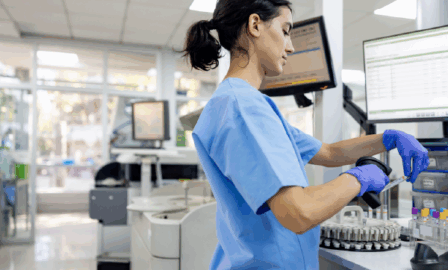Upgrading a LIMS System from LabWare 7 to LabWare 8
Upgrading a LIMS system from LabWare 7 to LabWare 8 is an investment needing a considerable amount of time and resources dedicated to the process. While there are several benefits of upgrading – most commonly, the addition of new features and technology performance enhancements, or fixes to bugs that may be present in the current system – this can be a daunting and costly endeavor without proper planning and preparation.
Considerations When Upgrading a LIMS System
When the decision to upgrade has been made, organizations need to consider a few questions before beginning the upgrade process:
- What are the pre-requisites for this LIMS system upgrade?
- Where do I start, and how?
- What does the upgrade entail?
- Should other improvements be bundled with the upgrade?
- Do we have the right resources allocated to support this project?
- How should legacy data be managed?
Looking for a LIMS Consulting Partner
What are the pre-requisites for this LIMS system upgrade?
Upgrading from LabWare 7 to LabWare 8 requires the Windows Operating System supporting the correct .NET Framework, Crystal Reports Support, and LabWare components for a successful install, and all need to be verified prior to starting. Without having the requirements in place and verified, the install may fail, encounter several errors, or have an unusable system. Additionally, a thorough review of the modules and labtracks bound to the source LabWare 7 system is also needed, as many modules developed on LabWare 7 have been embedded into the core LabWare 8 product; however, LabWare 8 versions of some modules may need to be added to the directory following proper bind rules.
Where do I start, and how?
To begin the upgrade, it’s necessary to have a specific license for LabWare 8. Executing the database installer for LabWare 8 will update the LabWare 7 database structure for successful use of the application. A major configuration change between LabWare 7 and LabWare 8 is the use of the server.sys and client.sys files, as these directories are no longer supported when upgrading to LabWare 8. The configuration details previously housed in these files are now stored in the respective tables in the database. Following the installation of the upgraded system, upgrading the database, and setting the LabWare 8 system configuration, it’s ready for evaluation. LabWare 7 and LabWare 8 use the same LIMS Basic compiler, so subroutine evaluation should be minimal but the system should be evaluated and tested prior to beginning validation.
What does the upgrade entail?
As mentioned above, LabWare v8 introduces a number of new features and modules. Included in the new version are newly updated LIMS Basic modules. Introduction of these modules may introduce additional LIMS Basic functions as well as modify LIMS Basic functions currently in use. As a result, a careful analysis of LIMS Basic code is required to identify the full impact to the system and truly understand the effort required to execute the upgrade.
Should other improvements be bundled with the upgrade?
A major system upgrade may seem an opportune time to include other infrastructure and application-level changes. For example, considerations may be given to migrate from traditional on-premise to cloud-based hosting, install the latest security packages, or upgrade the database from Oracle to MS SQL or vice versa. Consideration for bundling these changes should be taken with care, as any change may impact the underlying application configuration and therefore the validated state of the system. For example, a database conversion, while a seemingly standard activity from an infrastructure perspective, will require additional reconfigurations to queries found in both LabWare LIMS and Crystal Reports, drastically increasing the effort associated with an upgrade.
Do we have the right resources allocated to support this project?
Resources should be allocated for regression testing of the new system to ensure there is no lost functionality between the two systems. This may require several Subject Matter Experts (SMEs) to fully evaluate the change. It’s also imperative to evaluate any new database fields and determine what should be populated in those fields for any added functionality desired for the system. This may lead to a large effort of system or static data updates.
How should legacy data be managed?
Legacy data is always something to consider when upgrading a LIMS system. The data strategy will depend on several things, such as the corporate data retention policies, potential future uses of data, and regulatory requirements. It may be beneficial to archive the legacy transactional data, especially where laboratory testing is not ongoing. Stability or other long-range studies are often migrated or recreated in the new system where other transactional data is archived.
Upgrading from LabWare 7 to LabWare 8
Making the LIMS upgrade from LabWare 7 to LabWare 8 may seem complex or daunting, but with intentional, strategic planning, it can bring immense value to your organization. If you’re beginning to think about making the upgrade from LabWare 7 to LabWare 8, consider partnering with our trusted LIMS experts to help guide you through the process.
Subscribe to Clarkston's Insights



